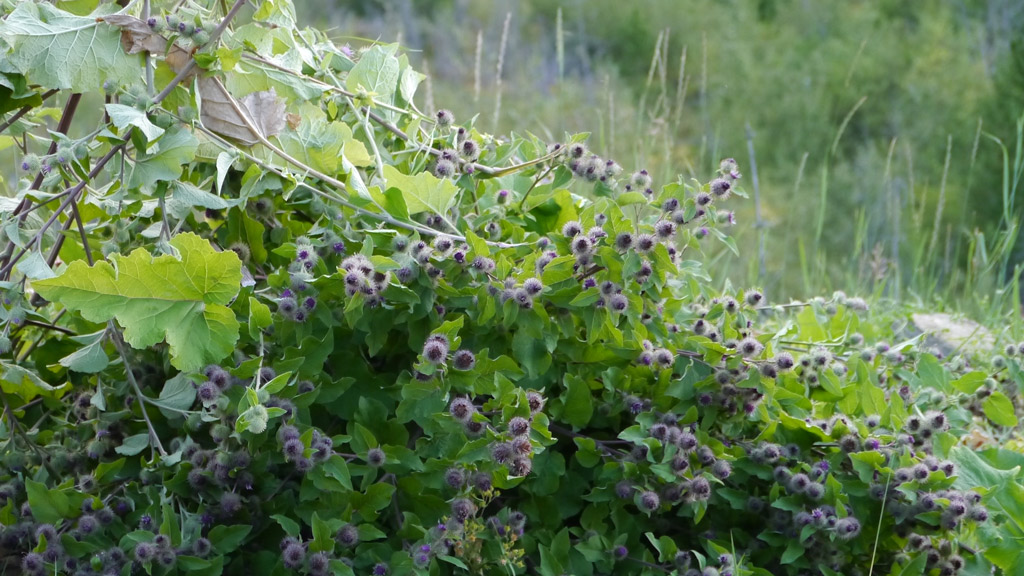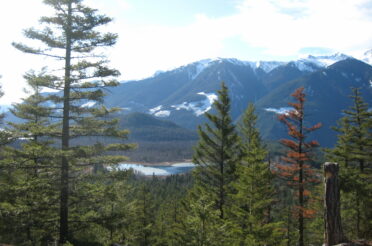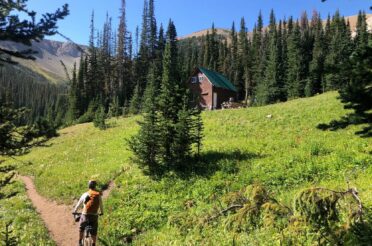
What is an invasive plant? Well, according to Field Guide to Noxious Weeds and Other Selected Invasive Plants of British Columbia, invasive plants (also known as weeds) are ‘non-native plants that have been introduced to British Columbia without the insect predators and plant pathogens that help keep them in check in their native habitats”. Because these plants have no natural predators they become aggressive in growth resulting in them being destructive, competitive and difficult to control.
But why is this a problem? Invasive plants pose big risks to the habitats they grow in. Some of the major risks associated with invasive plants are they reduce crop yield and quality, lead to environmental degradation and cause loss of native plants and animal habitats. Some other alarming problems associated with invasive plants are they can carry disease, reduce property value, ruin natural landscapes and be harmful to humans and animals.
Here in the Chilcotin Mountains, one of the most peskiest invasive plants we have is the dreaded burdock. Burdock is a tall weed – about 1-3 metres in height – that is commonly found alongside fences, roads, streams and in farmyards. Similar to a thistle, it has a round head with hooked spines that attach to animals, clothes, hair and even skin. It doesn’t take much interaction with the plant to become covered in it. Once it attaches itself to you, you now become a carrier and aid in its spreading. This is a problem as animals often get burdock in their fur and then move around, spreading the seeds across the country, causing the plant to populate areas faster than we can clean them.
Though a tedious task, the burdock-from the head to the hooked spines-must be removed from animals, people, clothing etc, and then properly disposed of in order to prevent spreading. Another way to help with the prevention of this invasive plant is to cut the stalks down while the heads of the plants are still green. When green the seeds are not mature and, therefore, cannot grow when they are spread.
Fun fact; burdock lead to the creation of Velcro®. George de Mestral, born in Switzerland on June 19, 1907, created it in 1955 after hiking through a patch of brush and becoming covered with burrs. Upon returning home from his hike de Mestral pulled off one of the burrs from his pants and examined it under a microscope. Here he saw that the burr had tiny hooks covering it. These hooks held onto the fabric loops in his clothing and his dogs fur. This design intrigued de Mestral, who then went on to create a hooks and loops fastening system. He experimented with his idea of using two sides: one with lots of small hooks and the other with lots of tiny loops. Through trial and error he found the correct size of hooks and loops to use as well as discovering that nylon, not cotton, was the best material for the hooks. In 1955 he perfected and patented his design. To create and manufacture his hook-and-loop fastener he created the company, Velcro® (a combination of the words “velour” and “crochet” French for “velvet” and “hooks”). Eventually de Mestral sold his rights to Velcro® before his passing on February 8, 1990.
Another fun fact is that burdock root is classified as a vegetable, which is native to northern Asia and Europe, though it now grows in the United States and Canada. For centuries burdock root has been used for holistic medicine to treat a variety of different conditions. Today many uses and health benefits for burdock root have been discovered and we’re going to introduce you to three of them.
The first benefit of Burdock root is it is full of antioxidants. According to research from 2010, burdock root contains multiple types of powerful antioxidants some of which includes quercetin, luteolin, and phenolic acids (Ferracane, Graziani, Gallo, Fogliano, & Ritieni 2010). A study from 2014 found that burdock root can reduce inflammatory markers in the blood of patients with osteoarthritis (Maghsoumi-Norouzabad, et al. 2014).
A second benefit of burdock root is that it removes toxins from and purifies the blood. Recent evidence has found that burdock root can remove toxins from the bloodstream. According to a study from 2011, burdock root can effectively remove toxins from the bloodstream and promote increased circulation (Chan, et al. 2010).
A third benefit of burdock root is that it can help treat skin issues. When applied topically, the anti-inflammatory and antibacterial properties of burdock root can aid in helping with skin conditions such as acne, psoriasis and eczema.
But with the benefits come some risks. Here we will highlight a few for you. The first risk we want to highlight is the use of burdock root with children. It is very important to note that there is very little to no available research on the pediatric use of burdock root with children. Therefore, never administer it to children prior to consulting your doctor first. Also, consuming burdock root is not suitable for pregnant women or women trying to become pregnant. (Ana Gotter December 5, 2018) A second risk associated with burdock root is, though it’s considered safe to eat, you should never consume burdock from the wild-only a reputable seller. This is because the burdock plant resembles a highly toxic plant called belladonna nightshade plant. It’s also important to note that these two plants often grow together. (Ana Gotter December 5, 2018)
A third risk pertaining to burdock is if you are allergic to chrysanthemums or daisies, then it is not recommended that you consume burdock root as you may be at an increased risk of having an allergic reaction to it. (Ana Gotter December 5, 2018)
So, although this is a pesky plant it does have some positive benefits. But, the next time you see this plant tangled up in your pets fur or your hair or clothing, pick it out-all of it, and throw it in the garbage, not on the ground, as that only aids in the spreading of the plant.
Jasmin, Ontario



